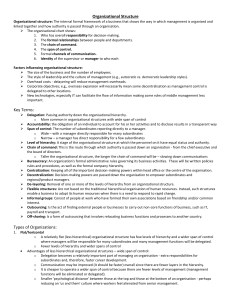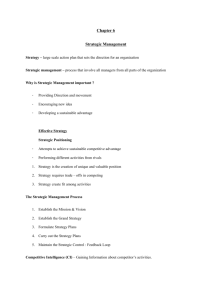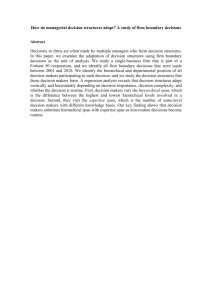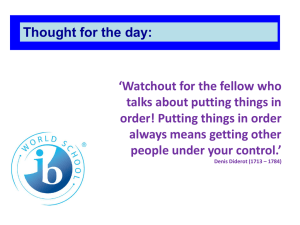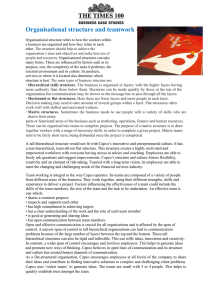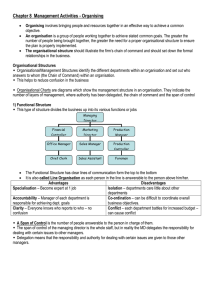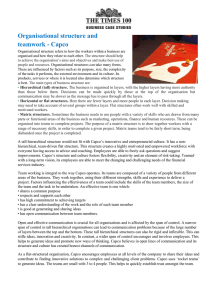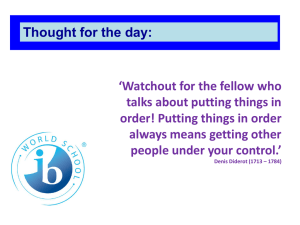Within any organisation there are likely to be
advertisement
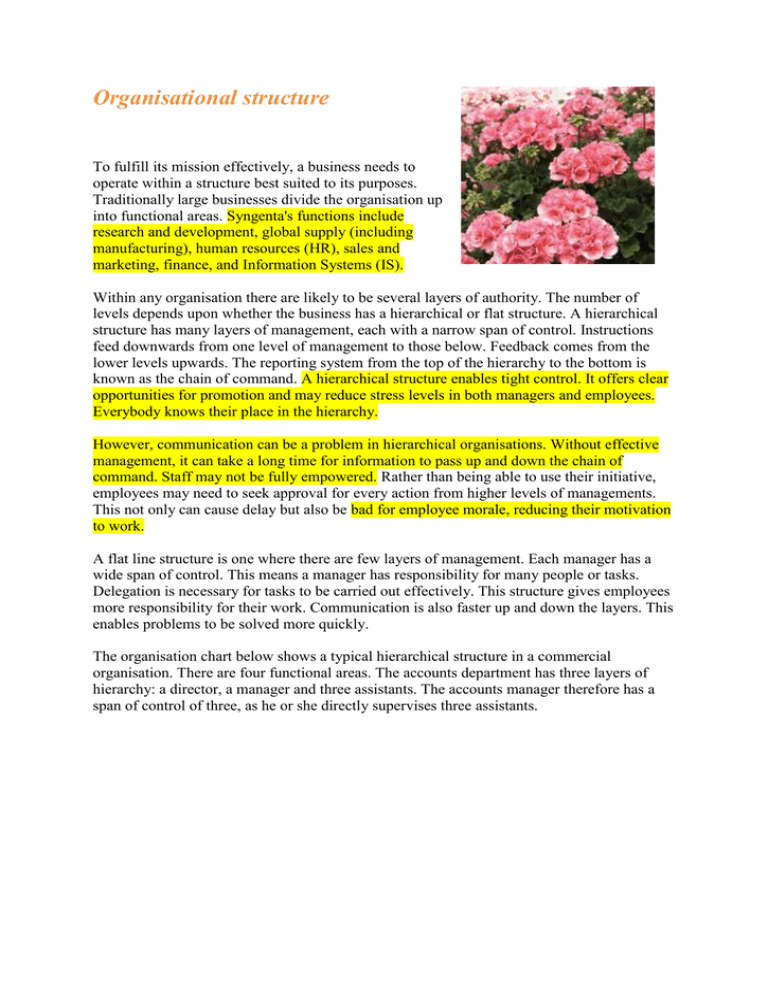
Organisational structure To fulfill its mission effectively, a business needs to operate within a structure best suited to its purposes. Traditionally large businesses divide the organisation up into functional areas. Syngenta's functions include research and development, global supply (including manufacturing), human resources (HR), sales and marketing, finance, and Information Systems (IS). Within any organisation there are likely to be several layers of authority. The number of levels depends upon whether the business has a hierarchical or flat structure. A hierarchical structure has many layers of management, each with a narrow span of control. Instructions feed downwards from one level of management to those below. Feedback comes from the lower levels upwards. The reporting system from the top of the hierarchy to the bottom is known as the chain of command. A hierarchical structure enables tight control. It offers clear opportunities for promotion and may reduce stress levels in both managers and employees. Everybody knows their place in the hierarchy. However, communication can be a problem in hierarchical organisations. Without effective management, it can take a long time for information to pass up and down the chain of command. Staff may not be fully empowered. Rather than being able to use their initiative, employees may need to seek approval for every action from higher levels of managements. This not only can cause delay but also be bad for employee morale, reducing their motivation to work. A flat line structure is one where there are few layers of management. Each manager has a wide span of control. This means a manager has responsibility for many people or tasks. Delegation is necessary for tasks to be carried out effectively. This structure gives employees more responsibility for their work. Communication is also faster up and down the layers. This enables problems to be solved more quickly. The organisation chart below shows a typical hierarchical structure in a commercial organisation. There are four functional areas. The accounts department has three layers of hierarchy: a director, a manager and three assistants. The accounts manager therefore has a span of control of three, as he or she directly supervises three assistants. Questions: 1. 2. 3. 4. 5. 6. 7. What are the functions Syngenta divided up into? How many levels of hierarchy does the operations functional area have? What is the span of control of Operations Manager for Brand A? What is the span of control for Supervisor 1 for Brand A? What type of organisational structure has Syngenta chosen? Explain 2 benefits of using that structure. Explain 2 disadvantages of having a tall structure. In your books, find definitions or the following key words: Chain of command Span of control Empowerment Motivation Delegation
